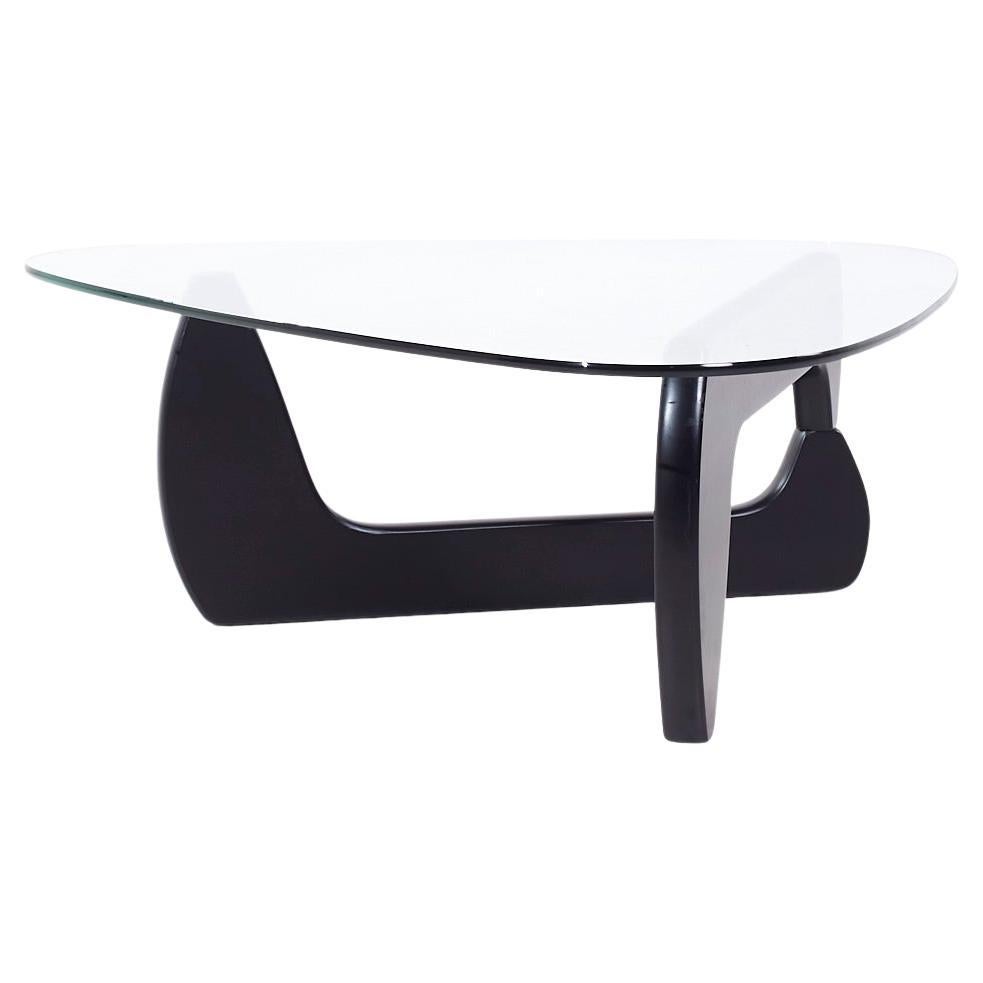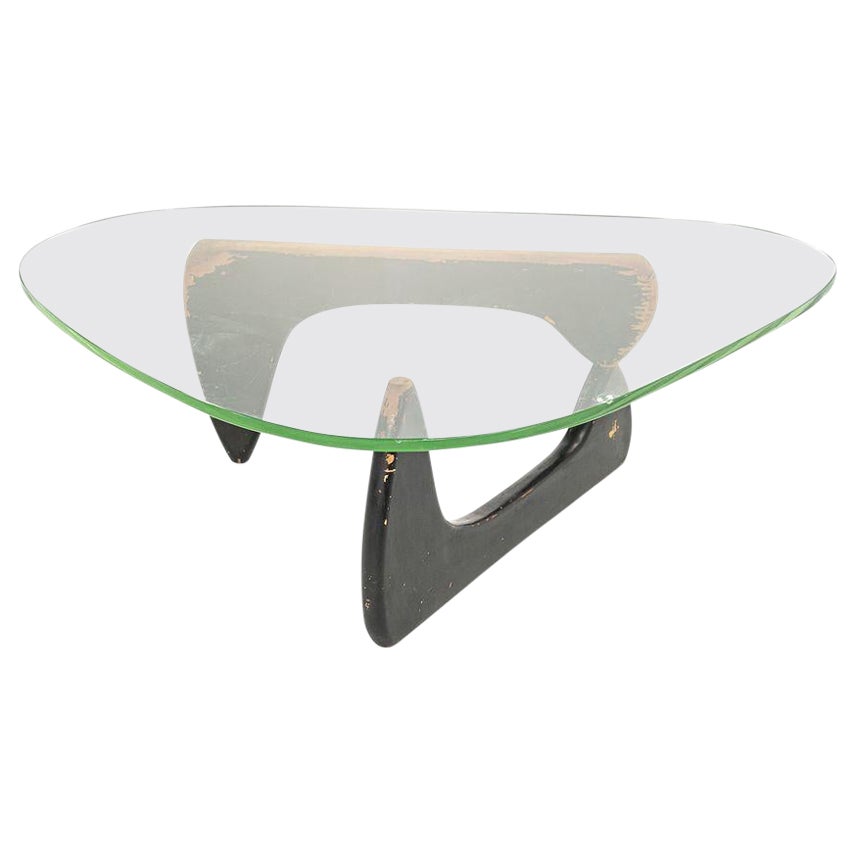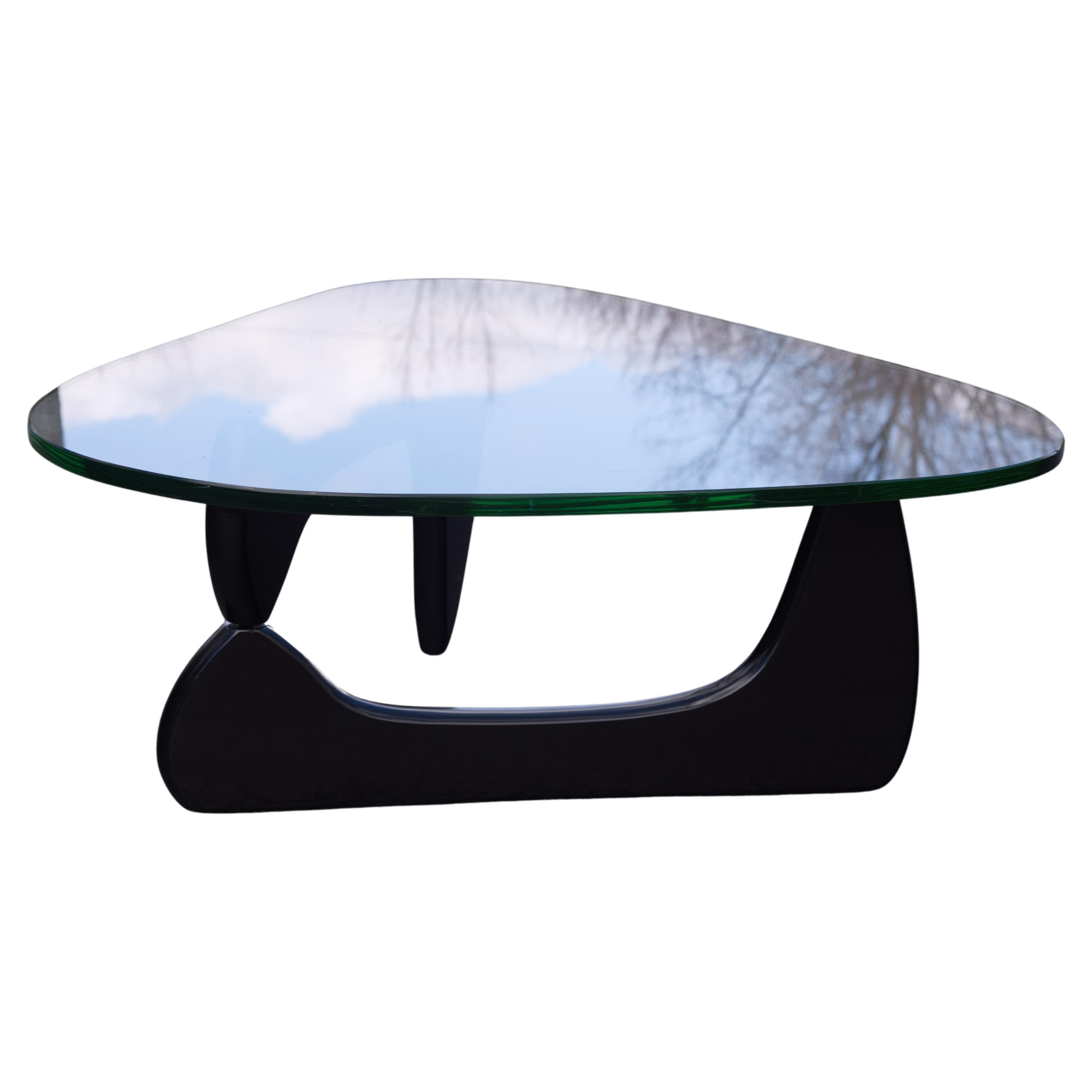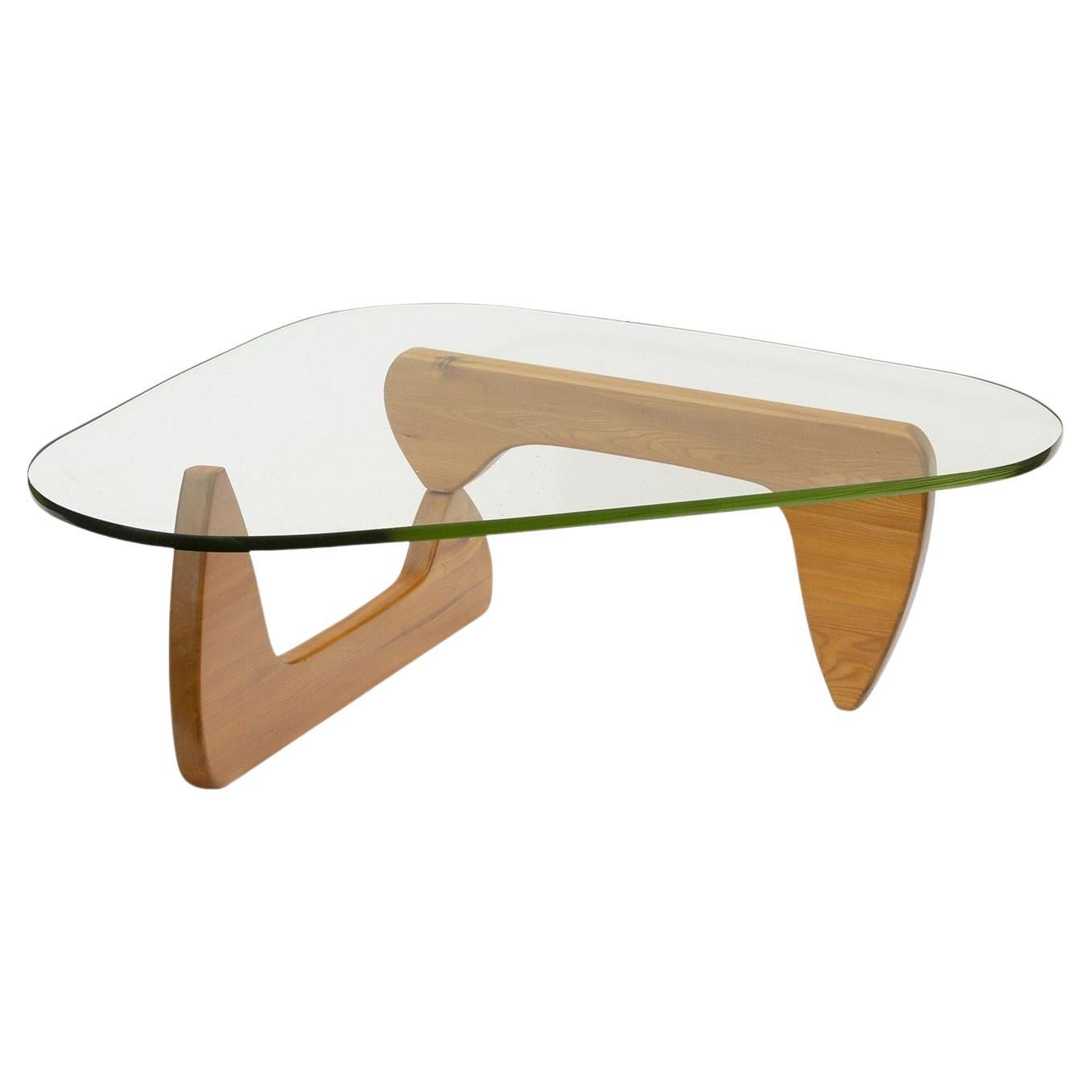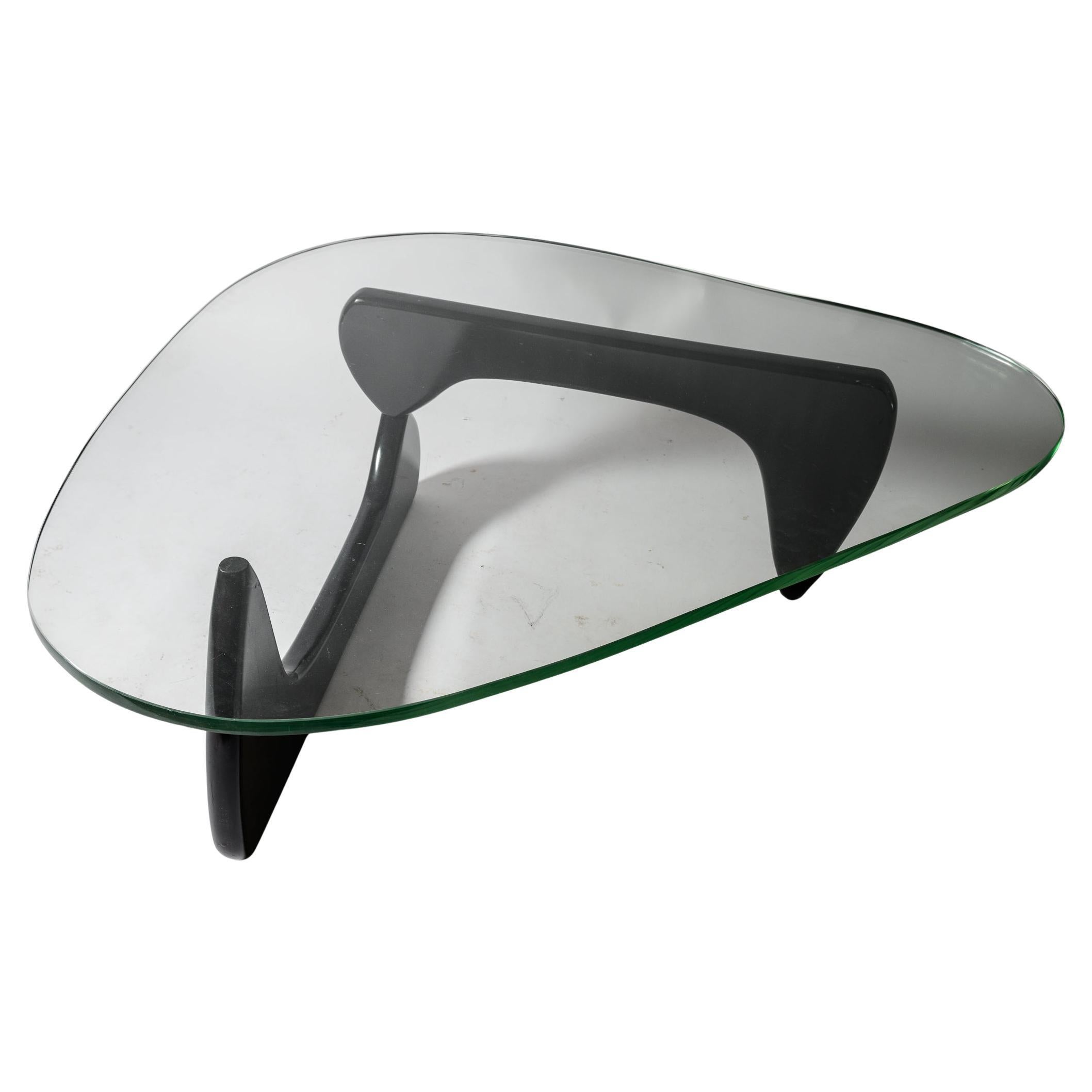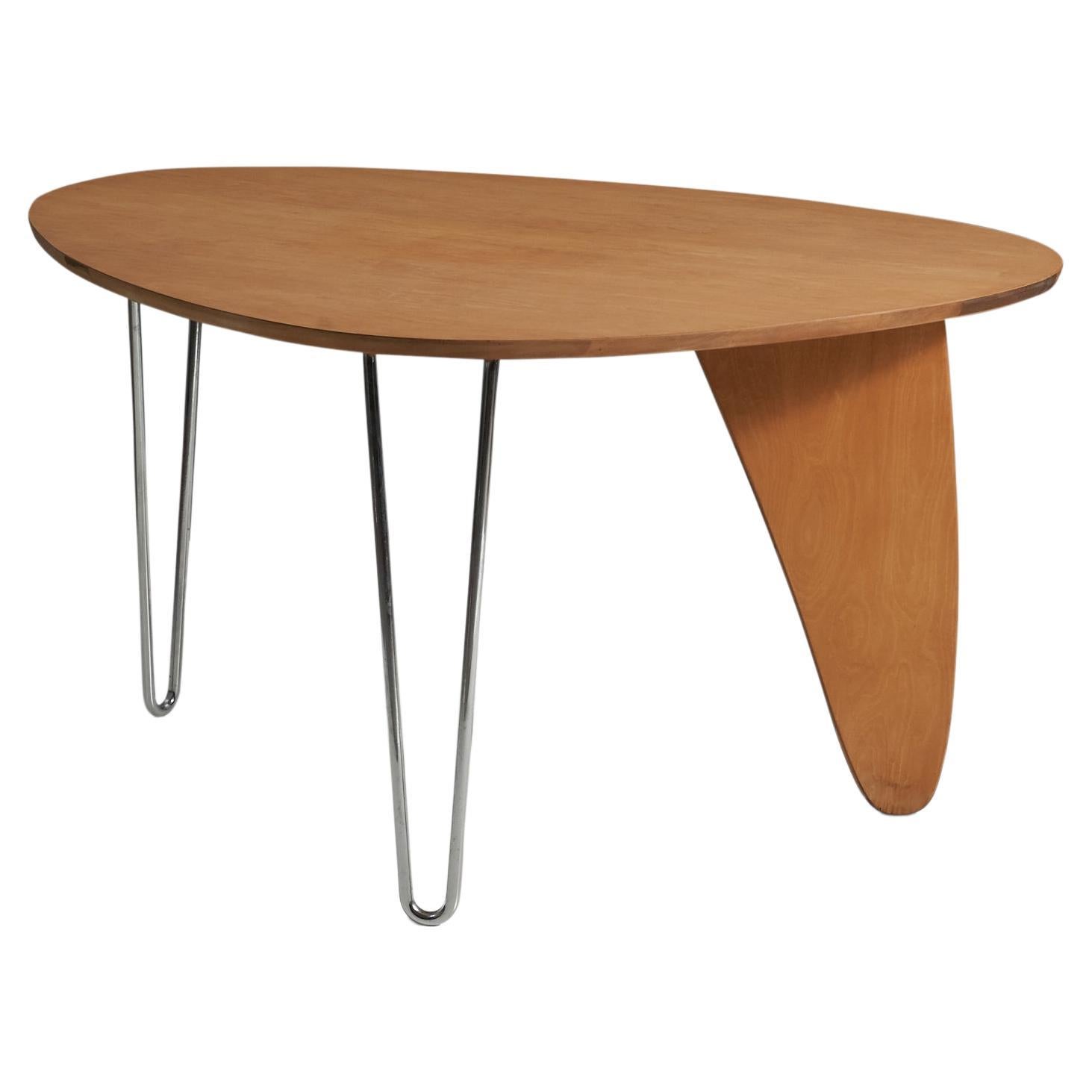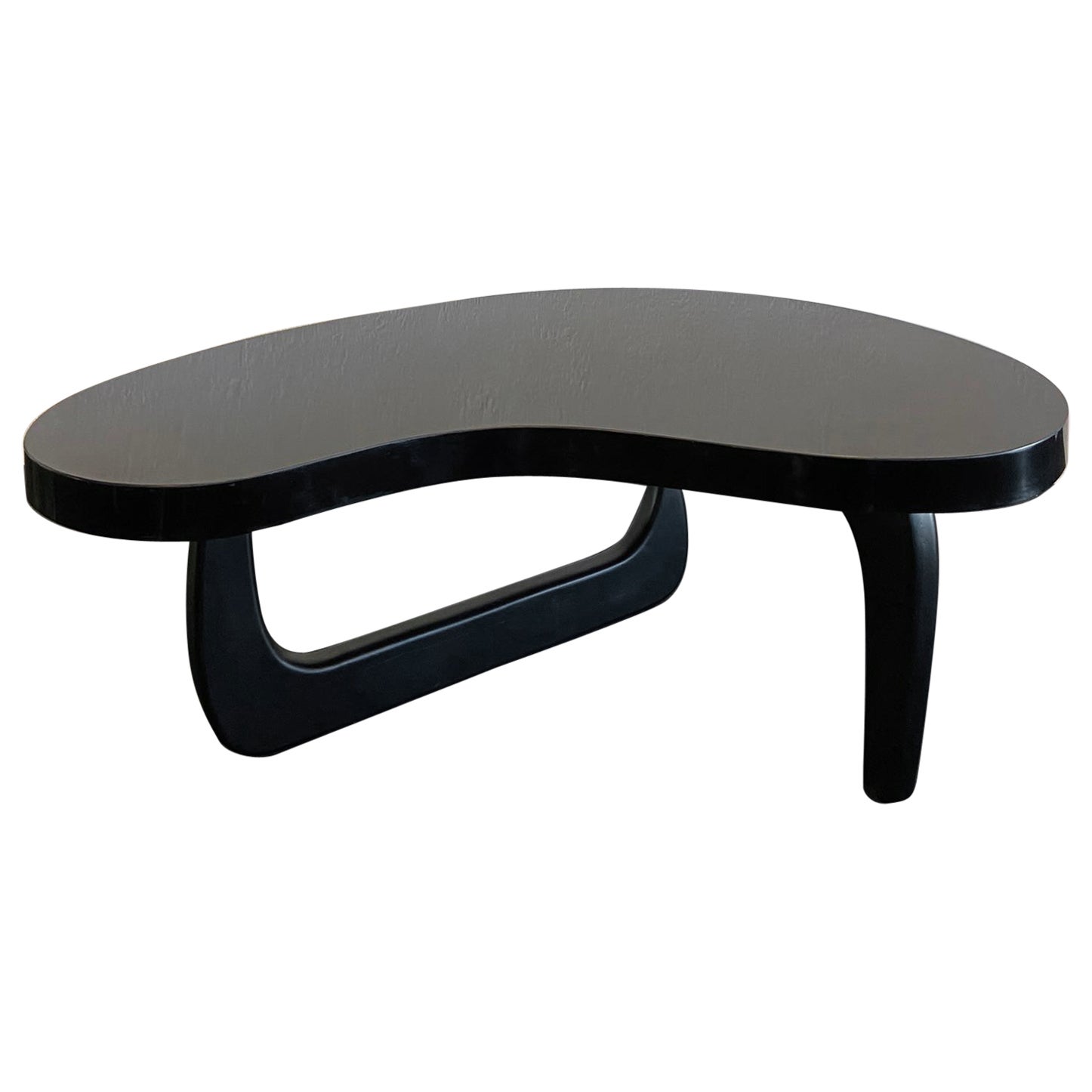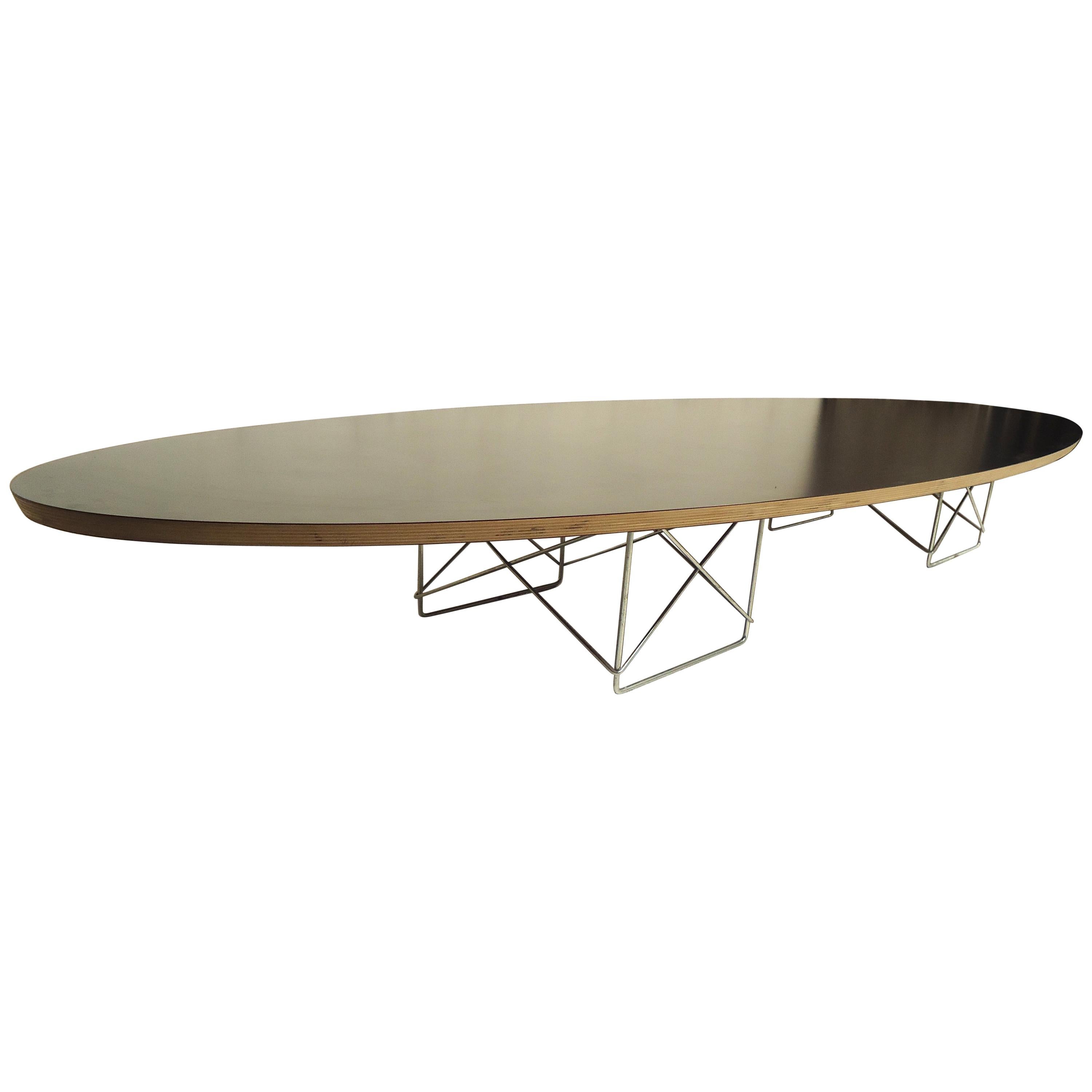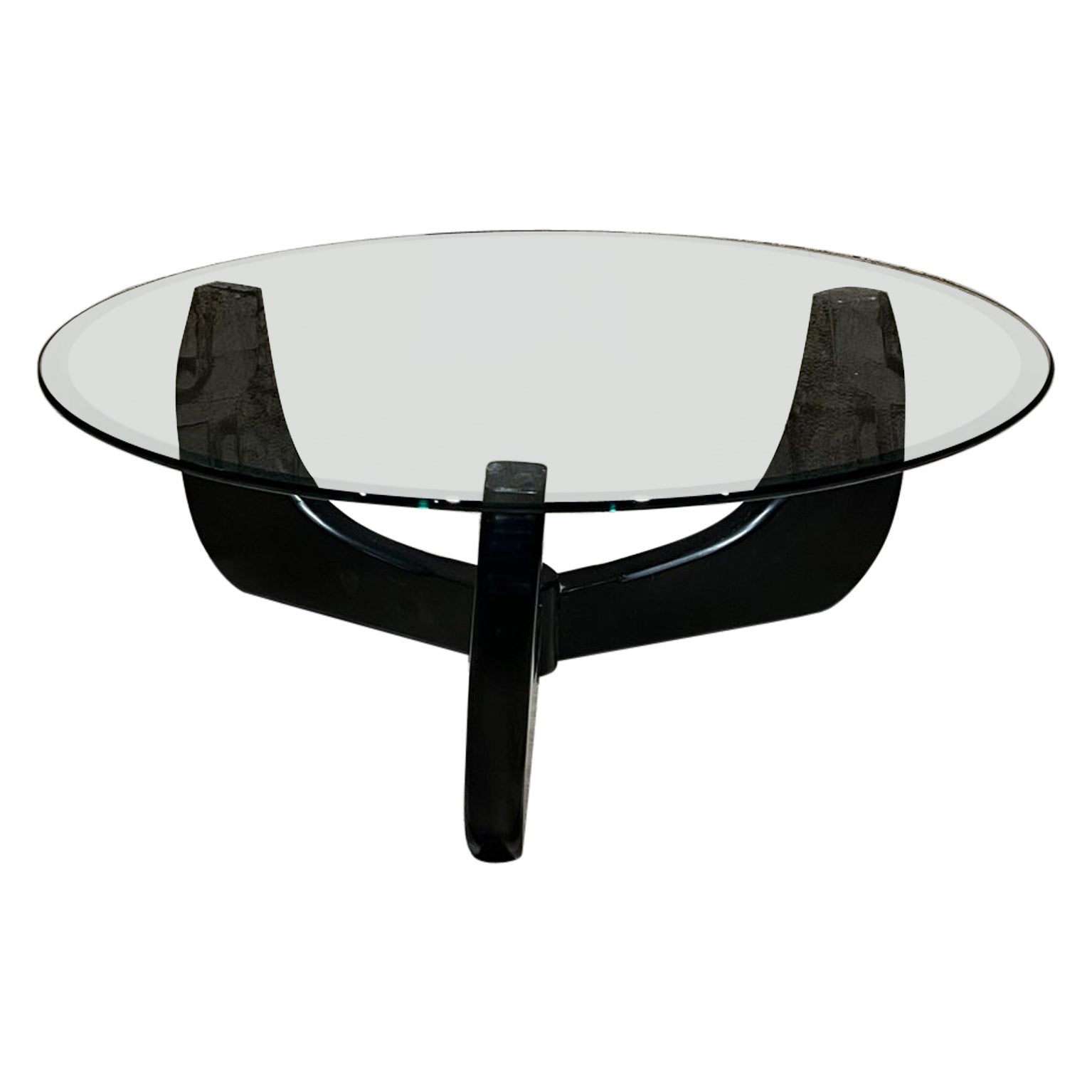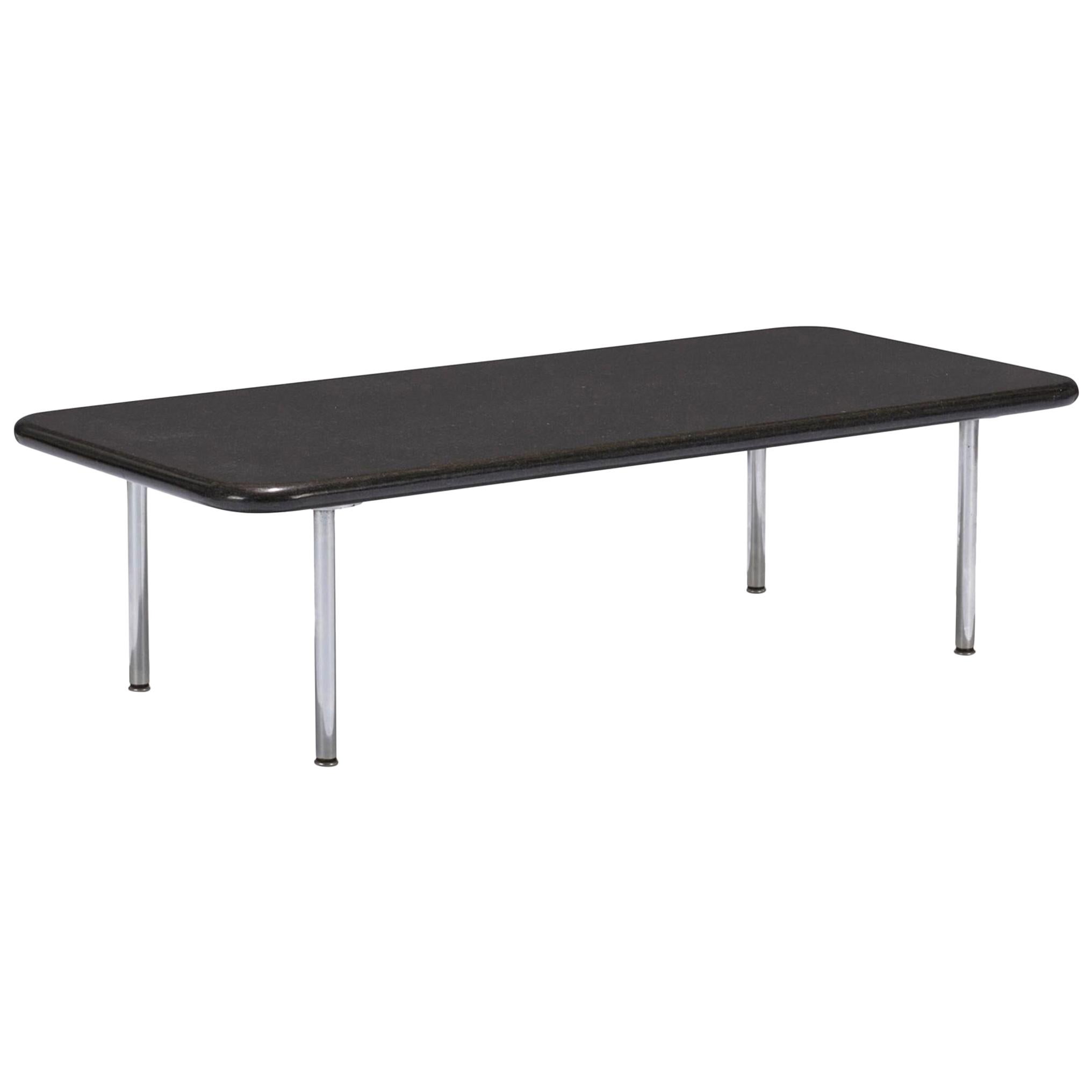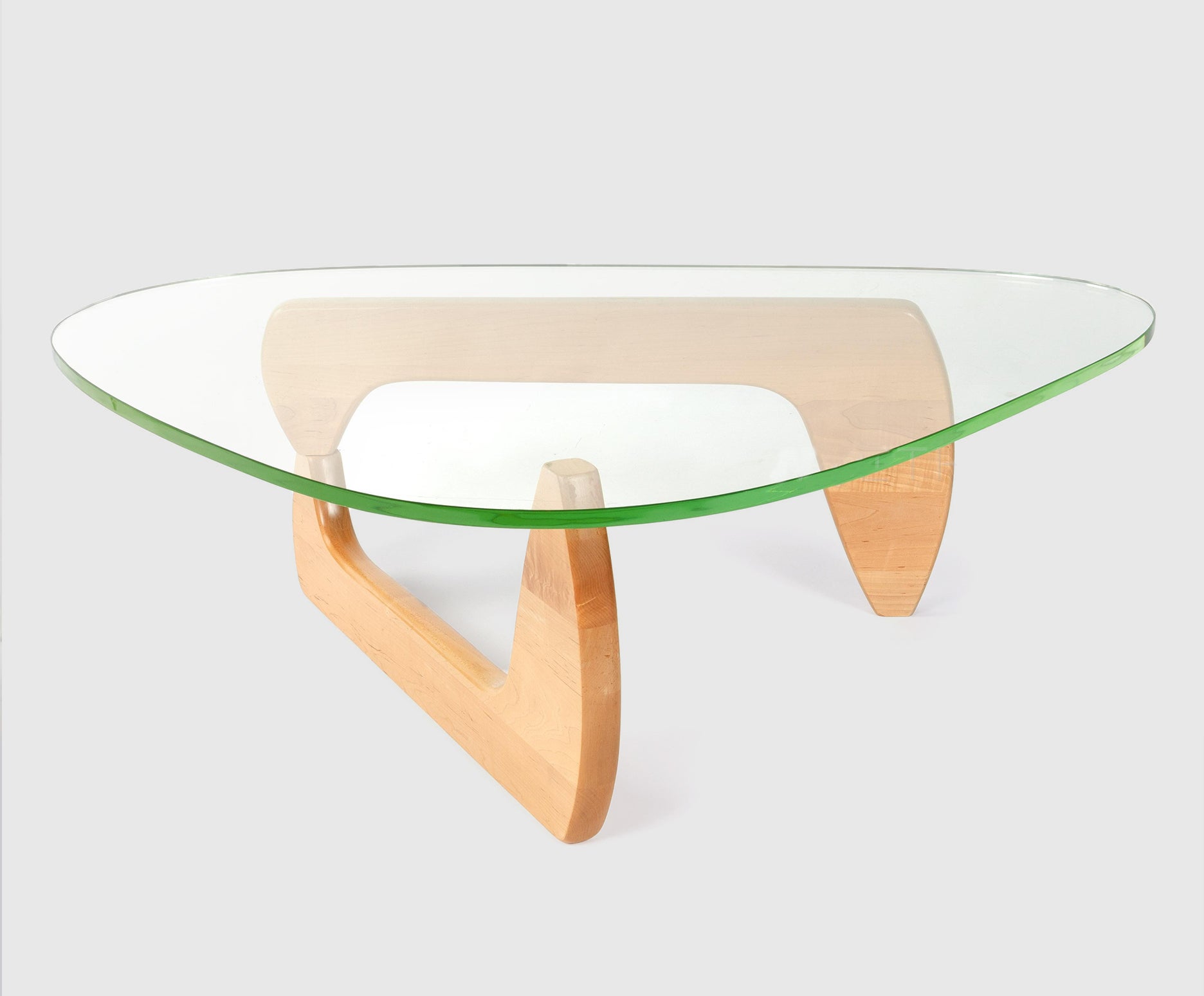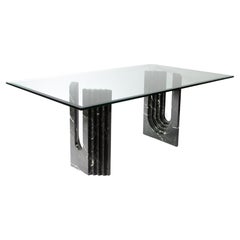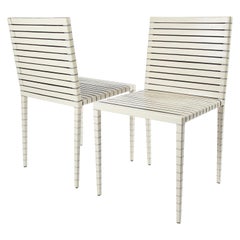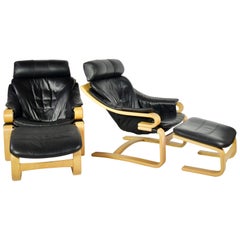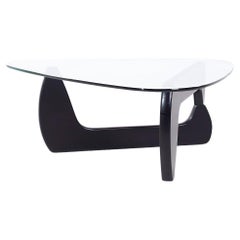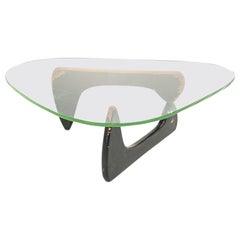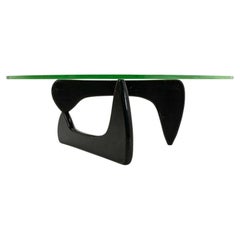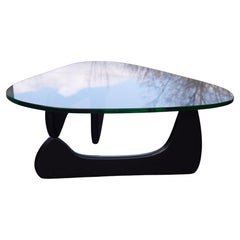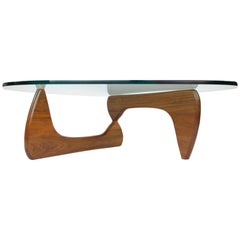
Isamu Noguchi Low Table IN-50 for Herman Miller
View Similar Items
Isamu Noguchi Low Table IN-50 for Herman Miller
About the Item
- Creator:Herman Miller (Manufacturer),Isamu Noguchi (Designer)
- Design:
- Dimensions:Height: 15.75 in (40.01 cm)Width: 50 in (127 cm)Depth: 36 in (91.44 cm)
- Style:Mid-Century Modern (Of the Period)
- Materials and Techniques:
- Place of Origin:
- Period:
- Date of Manufacture:1980s
- Condition:Wear consistent with age and use. Wood is in pristine condition. Mild scratches to glass.
- Seller Location:Los Angeles, CA
- Reference Number:1stDibs: LU4655216780412
Noguchi Coffee Table
As Isamu Noguchi (1904–88) saw it, he only created one truly good piece of furniture, a coffee table. Despite his legacy of design that combined dynamic forms with organic materials and resulted in an oeuvre still widely celebrated today, the Japanese-American artist and designer considered the Noguchi coffee table his singular success.
In 1944, Noguchi created the first version of his classic coffee table as a riff on a piece he designed for former MoMA president, A. Conger Goodyear, five years earlier. According to design lore, industrial designer and magazine journalist George Nelson visited Noguchi while working on an article titled “How to Make a Table” and found him at work on a prototype for the piece that would later become the Noguchi coffee table. Nelson, then the director of design at Herman Miller, was not only so taken by Noguchi’s creation that he used it to illustrate his essay but he also allegedly convinced the legendary furniture manufacturer to produce it. Beginning in 1948, the company did.
Art enthusiasts may compare the Noguchi table’s sculptural base to the work of a certain Romanian sculptor — and for good reason. A young Isamu Noguchi worked as Constantin Brancusi’s assistant for several months in 1927 before embarking on a wide-spanning career. He dabbled in furniture and lighting design, sculpture and more. Although it was produced some 15 years after Noguchi left Brancusi’s studio, the coffee table, with its sinuously shaped base, bears a stylistic similarity to Brancusi’s work. It also draws from the kind of abstract sculpture that Noguchi began to create during the 1940s while living in New York City’s Greenwich Village, where he first designed the table.
Comprising just two materials — wood and glass — the coffee table is visually complex yet ingenious in its simplicity. Two interlocking, identical wood pieces act as the base of Noguchi’s design, and they’re covered with a glass top. Due to the base’s asymmetrical form, the table looks different from any angle — and the clear top ensures that no angle is ever obscured.
When it debuted in the Herman Miller catalogue, the Noguchi coffee table was touted as a “sculpture for use.” Noguchi produced the first version of the table in rosewood, and Herman Miller now offers it in black, cherry, walnut and white ash, each of which uniquely celebrates the artist’s deep appreciation for natural materials.
Isamu Noguchi
A sculptor, painter, ceramicist and furniture and lighting designer, Isamu Noguchi was one of the most prolific and protean creative forces of the 20th century and a key figure in the development of organic modernism. Noguchi’s sculptures and designs — his chairs and tables as well as his timeless Akari lamp and other lighting fixtures — share a common spirit: one of lyrical abstraction, tempo and flow and harmonious balance.
Noguchi was born in Los Angeles to an American mother and Japanese father, and spent most of his childhood in Japan. He returned to the United States at age 13, went to high school in Indiana and enrolled at Columbia University to study medicine. At the same time, he took night courses in sculpture.
Within three months, Noguchi left college to pursue art full time. Noguchi was awarded a Guggenheim Fellowship in 1927 and traveled to Paris to work under Constantin Brancusi. It marked a turning point. Inspired by Brancusi, Noguchi embraced abstraction and began to sculpt in the expressive, rhythmic style that would be the hallmark of his work.
Once back in New York, Noguchi was introduced to design by what would become a lifelong collaboration creating sets for choreographer Martha Graham. His first industrial designs were in Bakelite: the sleek Measured Time kitchen timer created circa 1932, and his famed Zenith Radio Nurse intercom, from 1937.
Ten years later, Herman Miller introduced Noguchi’s now-iconic glass-topped coffee table with an articulated wooden base. His washi paper and bamboo Akari light sculptures, handmade in Japan, debuted in 1951. In the late 1950s, Noguchi designed for Knoll, creating such pieces as his dynamic Cyclone table and rocking stool.
For collectors, Noguchi’s furniture and lighting designs remain his most accessible work — they have the same power and presence that Noguchi brought to his art.
Find vintage Isamu Noguchi floor lamps, table lamps, coffee tables and other furniture on 1stDibs.
More From This Seller
View AllVintage 1960s American Mid-Century Modern Coffee and Cocktail Tables
Chrome
Vintage 1970s Italian Mid-Century Modern Dining Room Tables
Marble
Early 2000s Italian Modern Chairs
Leather
Vintage 1970s Danish Scandinavian Modern Lounge Chairs
Leather, Bentwood
1990s American Biedermeier Club Chairs
Maple, Fabric
Late 20th Century Italian Modern Floor Lamps
Steel
You May Also Like
Vintage 1970s American Mid-Century Modern Coffee and Cocktail Tables
Glass, Wood
Vintage 1950s American Modern Coffee and Cocktail Tables
Glass, Birch, Paint
Vintage 1950s American Mid-Century Modern Coffee and Cocktail Tables
Glass
Late 20th Century American Mid-Century Modern Coffee and Cocktail Tables
Glass, Cherry
Vintage 1940s American Mid-Century Modern Coffee and Cocktail Tables
Uranium Glass, Ash
Vintage 1950s American Coffee and Cocktail Tables
Wood
Recently Viewed
View AllRead More
A Guide to Herman Miller’s Most Iconic Furniture
The prolific manufacturer has partnered with many of the world’s top designers since opening its doors in 1923. Here are some of the company’s greatest hits, which helped transform the American home and office.
The 21 Most Popular Mid-Century Modern Chairs
You know the designs, now get the stories about how they came to be.
